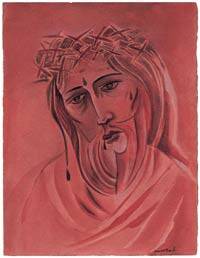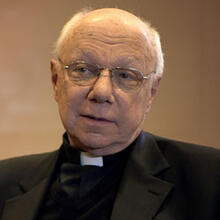As a seminarian from 1960 to 1964 and as a priest from 1969 to 1971, I studied theology at the Gregorian University in Rome. One of the lessons I learned from several of the Jesuit professors there was the importance of attending to the historical circumstances surrounding the doctrinal pronouncements of ecumenical councils.
It was important, first of all, to know the conflict that led to an issue being debated at a council and resolved there. Knowing the theologies of the parties involved offered an invaluable background for such debates and the factors that led to certain words being used to settle them. For more recent councils there were records of the proceedings and discussions in commissions and at the formal sessions of the councils themselves. All of this study helped to clarify the meaning and intention of the council with respect to a particular statement.
This approach to dogmas was ratified by the Congregation for the Doctrine of the Faith in 1973 with its declaration Mysterium Ecclesiae, which notes the “difficulties [that] arise from the historical condition that affects the expression of Revelation.” The congregation describes as conditions that affect teaching: the limitations of the language and culture of a particular era and the need in a particular time to address a specific question or error.
Another lesson I learned from our professors was that no theologian works in the abstract. Every theologian comes from a theological tradition and is influenced by predecessors in both positive and negative ways. A theological tradition can be called a school, not necessarily in the sense of a specific building but in the sense of methodology and emphasis. A theologian may be molded by that school and work within its framework or react against it and perhaps become the founder of another school. In the early church, Origen was a formidable influence on later generations, as were Thomas Aquinas, Bonaventure and Duns Scotus in the Middle Ages and beyond. In the early 19th century there was the Tübingen school, and the 20th century gave us such great theologians as Karl Rahner, S.J., and Bernard Lonergan, S.J., participants in a broader stream of transcendental theology, whose work continues in countless numbers of disciples today. These are only a few of the schools of theology that have existed in the history of the church.
Every theologian also works in the context of the contemporary culture and the current pastoral needs of the church. While the teaching of the church is the fundamental given on which the theologian works, questions come from the world and the life of the church that frequently provoke the theologian’s inquiry into the Christian tradition and dogmas. It can be easily shown that much of the productive theological output of the period between World War II and the Second Vatican Council was prompted by the challenges that people of faith had to address as a result of the violent wars of the 20th century and the rise of a militant atheism in the Soviet Union and a philosophical atheism in Western Europe.
Theologians also have to work with the faith, as the people of God “penetrates it more deeply through right judgment, and applies it more fully in daily life” (“Dogmatic Constitution on the Church,” No. 12). The experience and faith of God’s people lead theologians to articulate that experience and faith by drawing on the depth and breadth of the Christian tradition. That articulation, in turn, further deepens our understanding of the tradition. The massive poverty of the people of Latin America, for example, led to liberation theology and the church’s preferential option for the poor, embraced as a formulation of the church’s mission by both Pope John Paul II and Benedict XVI.
Just as no theologian works in the abstract, so too no exercise of the magisterium occurs in the abstract. That was already clear from Mysterium Ecclesiae. The C.D.F. notes, for example, that truths enunciated by the magisterium may bear traces of “the changeable conceptions of a given epoch,” and so theologians “seek to define exactly the intention of teaching proper to various [dogmatic] formulas.” But theologians are involved in the very formulation of teaching as well. John Courtney Murray, S. J., and Msgr. Pietro Pavan, for example, were principal contributors to Vatican II’s “Declaration on Religious Liberty” (Dignitatis Humanae). Earlier Pavan had been the major adviser for Pope John XXIII’s social encyclicals, Mater et Magistra(1961) and Pacem in Terris(1963). The participation of theologians in the formulation of church teaching has always been the case and is still the case today.
Bishops are called to the office of teaching for the ultimate discernment of the truth to be proclaimed, and theologians are endowed with the charism to deepen and articulate in credible ways the understanding of the truth proclaimed. Some bishops have had and have the charism of being theologians as well, but it is not intrinsic to the office of bishop to be a theologian in the sense of a rigorous and scholarly pursuit of the history of church teaching and its application today. That is why the magisterium turns to theologians for assistance in formulating teaching.
Theologians, of course, bring their own limitations. The genius of the bishops at Vatican II was to listen to all the schools of theology at that time, which is reflected in the documents of the council. That makes the documents more difficult to interpret, but it also respects the diversity in unity characteristic of the Catholic Church. It is not surprising, then, that documents of lesser magisterial weight, dependent on a smaller circle of theologians as consultants, will provoke debate.
No one knew that better than Cardinal John Henry Newman. In his Apologia pro Vita SuaNewman described the relationship between authority and reason in the church as a “noisy process.” He wrote: “Every exercise of Infallibility is brought out into act by an intense and varied operation of the Reason, both as its ally and as its opponent.” Theologians are involved in the work of the magisterium at every level of preparation and authority, but they are also involved afterward in the work of deepening understanding, opening new avenues of discussion and linking particular teachings to the larger context of church tradition and teaching.
Our Jesuit professors at the Gregorian in the 1960s honored always the deposit of faith, but they also taught us that the truth comes to us in the fragile forms of human language. To pursue the truth in its fragile forms is necessary, demanding, controversial, but never without divine surprise.








